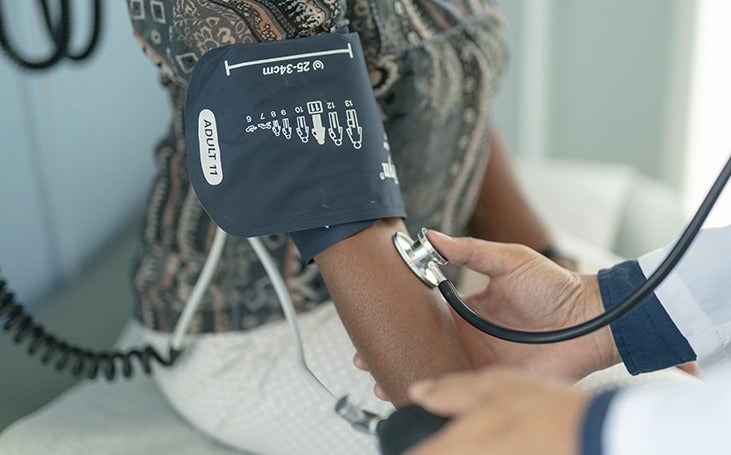Your Blood Pressure: The Good, the Bad, and the Ugly

What should your blood pressure numbers be?
You’re at the doctor; they’re taking your blood pressure, and they say “120-over-80”. But what do these numbers mean?
120/80 is considered “normal” or healthy blood pressure. The top number (120) is your systolic number. This is the amount of pressure in your arteries during the contraction of your heart. The bottom number (80) is your diastolic number. This is your blood pressure between heart beats.
Knowing these two numbers and what they indicate can help you and your care team manage your health.
Why is your blood pressure important?
According to the American Heart Association, almost half of adults in the United States have high blood pressure. If untreated, high blood pressure (hypertension) damages your circulatory system, and puts you at risk for heart disease and stroke.
High blood pressure can affect anyone. However, certain people are at higher risk than others. Some health conditions and lifestyle choices contribute to this risk.
Some risk factors include:
- Prehypertension – This is a big red flag. This condition means your blood pressure is higher than average, but not high enough to be hypertension.
- Diabetes – Living with diabetes is hard enough – it also raises your risk of heart disease, stroke, kidney disease, and other health problems. Learn more ways to manage your diabetes here.
- Being overweight – Your chances of high blood pressure increases with your body weight. For some people, weight loss goes beyond cosmetic – it is essential to avoid being at risk of health complications. If maintaining a healthy weight is a concern, check out these tips to manage your weight in a healthy, sustainable way.
- Smoking – We don’t have to tell you that smoking is bad for your health. Quitting is easier said than done, but it’s never too late to stop smoking. Take the first steps to quit. Your health is worth it.
- Drinking too much alcohol – Your body handles alcohol differently as you age. Sometimes, it’s hard to know how much alcohol is too much, especially for older adults. Learn more about how to drink in moderation and the risk factors if left unchecked.
- Poor diet – As you age, proper nutrition is vital to lead a healthy life with minimal risk for complications. Your nutrition and diet play a vital role in your blood pressure numbers. Learn the importance of good nutrition here.
- Family history – Do people in your family have a history of heart disease or high blood pressure? If so, you could be at risk. Talk to your family members to get a better idea of where you stand.
If you have any of the above risk factors, learning your numbers and where you fall in the blood pressure range is essential.
By understanding and taking control of your health, you can take steps to avoid high blood pressure. This condition is often referred to as the “silent killer” because it doesn’t typically come with symptoms or warning signs. Use the chart below to see where you fall.
|
Top Number |
Bottom Number |
What the |
What to do |
|---|---|---|---|
| Less than 120 | Less than 80 | Normal blood pressure | Maintain a healthy lifestyle |
| 120-129 | Less than 80 | Elevated Blood Pressure | Talk to your doctor about diet and lifestyle changes |
| 130-139 | 80-89 | High blood pressure (hypertension) Stage 1 |
Talk to your doctor about diet, lifestyle changes, and medication |
| 140 or higher | 90 or higher | High blood pressure (hypertension) Stage 2 |
Talk to your doctor about diet, lifestyle changes, and medication |
| Higher than 180 | Higher than 120 | Hypertensive Crisis | Talk to your doctor about diet, lifestyle changes, and medication |
Speak to your doctor about your risk factors, and get your numbers to create a plan to lower them if they are too high. Your health is worth it!
Want more health and wellness articles and other important health updates? Sign up to receive them directly to your inbox here!
